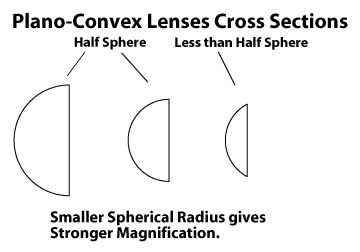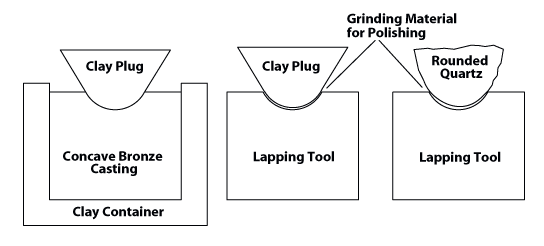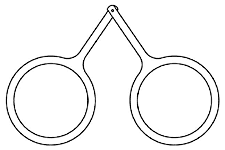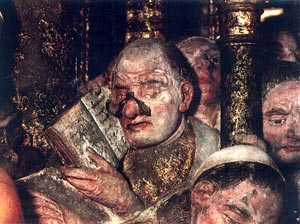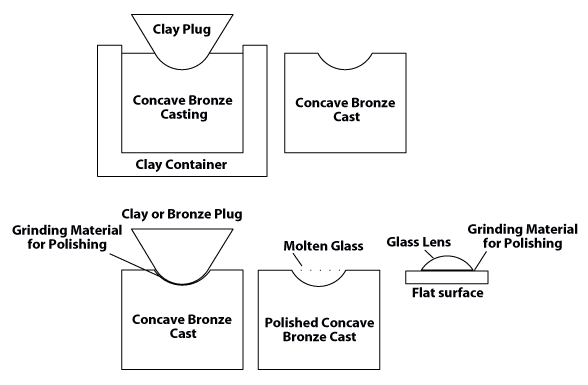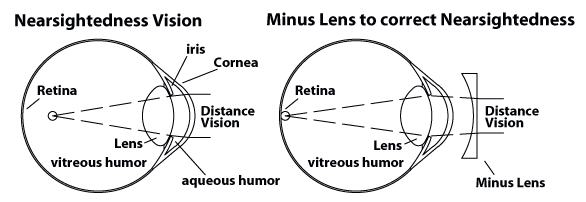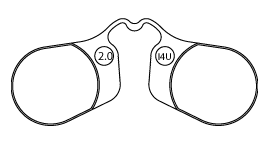
|
|
|
||||
|
|
|
|
The
History of Reading Glasses
|
|
About 1,000 years ago, very few people had the need, or ability to read and write. Most of them were monks. As they grew older, reading and writing, in not very well lighted rooms, became very difficult (due to what we now call PRESBYOPIA). At that time, monks were able to make "Reading Stones". The "Reading Stones" were a section of a spherical clear and polished natural Glass (quartz). Imagine a ping-pong ball made of transparent and polished glass: if you cut the ball in two equal sections, you have two reading stones or actually what we now call, PLANO-CONVEX magnifying lenses. By trial and error, the monks realized that larger stones, ones with a larger spherical radius, would give less magnification than smaller stones, and the flat part of the stone did not have to be the middle of the sphere.
Eyeglasses for reading have what is called Plus Power Lenses: they move the focal point from behind the retina onto the retina itself. Now comes an interesting question. How did the monks made the "Reading Stones"? I have searched and have not been able to find any information on how this was accomplished. Here is my best guess on how they were made: At that time, glass making was in its infancy. My best guess is that the monks used quartz, a natural glass found in nature: a piece of quartz was selected that had some roundness shape with an appropriate radius. Next, manually grinding the stone against some abrasive rock material, they managed to give the stone a rough spherical shape. Lastly, they would finely grind and polish the stone into a perfect spherical shape. Easily accomplished in modern times, but how was it done over 1,000 years ago? In the manufacturing of our i4ULENSES, we use steel convex sections that have a perfect spherical shape and are polished to a mirror finish to create the molds that produce our lenses. To polish the steel Convex section, a block of a soft material (copper or brass) is cut on a computer controlled lathe to a Concave Spherical shape, with a radius slightly larger than the radius of the steel Convex part to be polished. A grinding compound is added between the two surfaces and by manually or mechanically moving one part over the other (Lapping), the steel setion is polished to a mirror finish. It is possible that the monks used a similar approach. First, a clay convex plug was created on a potters wheel (easy to make with an appropriate wood template), and fired. Next using the clay plug, a bronze Concave "lapping" tool was casted. By using some type of grinding material between the lapping tool and the quartz stone, they were able to make reading stones.
The master-glassmakers of Venice began making spectacles at the end of the 13th century. The glasses were actually two magnifying lenses connected by hinge or pivot mechanism (with an inverted V shape), which could be made from wood, metal, or baleen and in later times copper wire.
These "Plus Lenses" glasses were only for correcting close distance vision (presbyopia and farsightedness). There are paintings of monks using these eyeglasses dating to the middle of the 13th century. Also, there is a church in Zaragoza, Spain that has statues of monks, one having a pair of early eyeglasses (circa 1,490).
15th and 16th Centuries A significant development
in the making of eyeglasses was the introduction of the concave
lenses, solving the problem of nearsightedness (distance vision).
It is possible that the first Minus Power Lenses were what we now call FLAT Plano-Concave lenses:
At a later time, lens makers got more sophisticated and created Minus lenses of the type we now call Bent, where one surface is convex and the other is concave with a smaller radius than the convex surface:
17th Century One of the major problems for the eyeglasses was how to keep them on. One solution was to have some string or ribbons attached to the lenses and loop them over the ears. 18th Century Finally, the side temples were invented and have stayed with us for centuries! Temples with sliding extension were introduced in Europe. Benjamin Franklin developed the bifocal eyeglasses. He needed eyeglasses for distance and close vision and he got tired of changing eyeglasses when he changed his vision from distance to close or vice versa. He had the lenses cut in halves, and mounted the distance vision half lens on the upper part and the close vision half lens on the lower part of the eyeglasses frames. The Lorgnette became very popular with people who could not wear eyeglasses.
Cylindrical lenses to correct Astigmatism were introduced. The monocle (one lens) became very popular in Germany At the end of the century, pinch-nose (Pince-Nez) eyeglasses were well established because of its convenience. 20th Century Early in the century, eyeglasses frames began to be designed with fashion in mind. By the 1945, a number of different Contact Lenses were available: By the 1970's, with greater improvement in the design of contact lenses (soft lenses),a large number of people started to use them. And finally, eye surgery: Radial Keratotomy for Nearsightedness, and later, eye surgery using Laser and computers became well established for solving Farsightedness, Nearsightedness and Astigmatism (PKR and LASIK). Some experimental techniques are being explored to correct Presbyopia. 21st Century i4ULENSES,
the first credit card size pinch nose reading glasses in the world
are announced!
|
|
